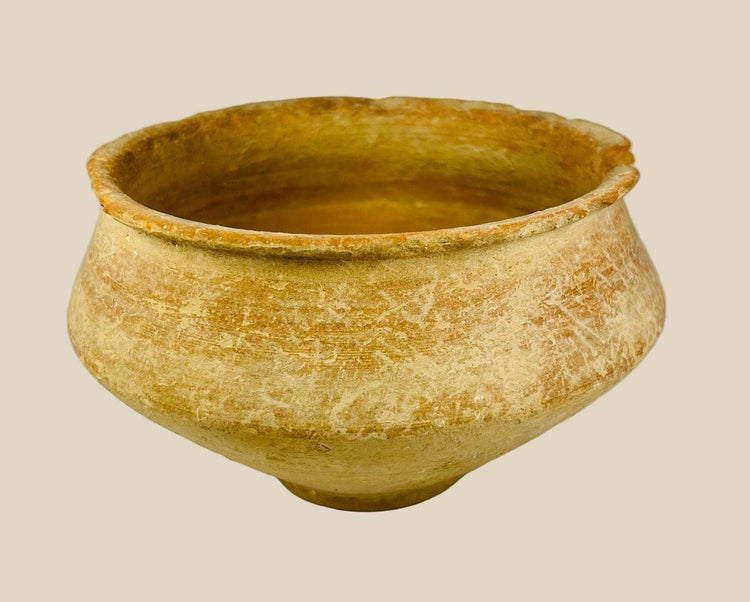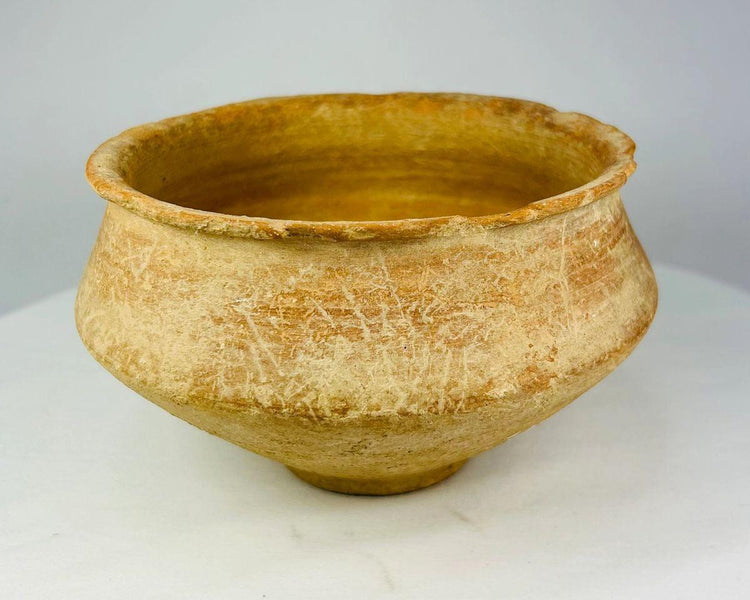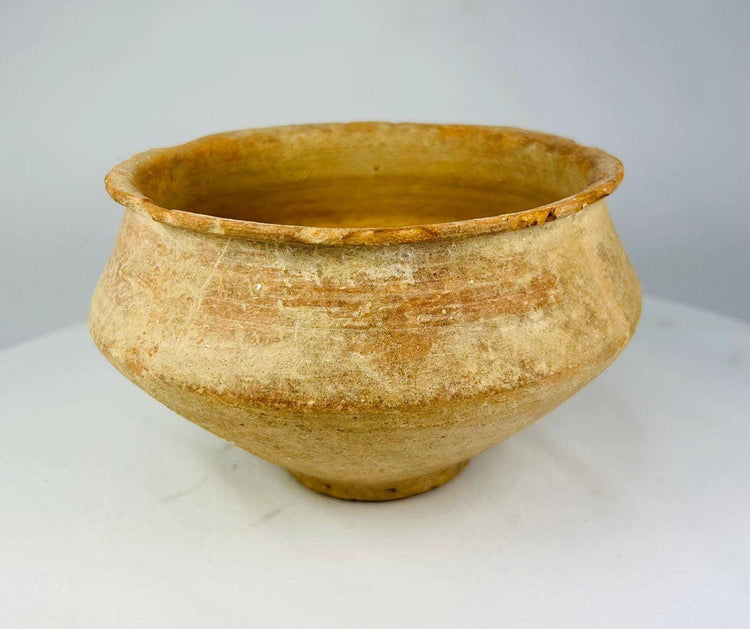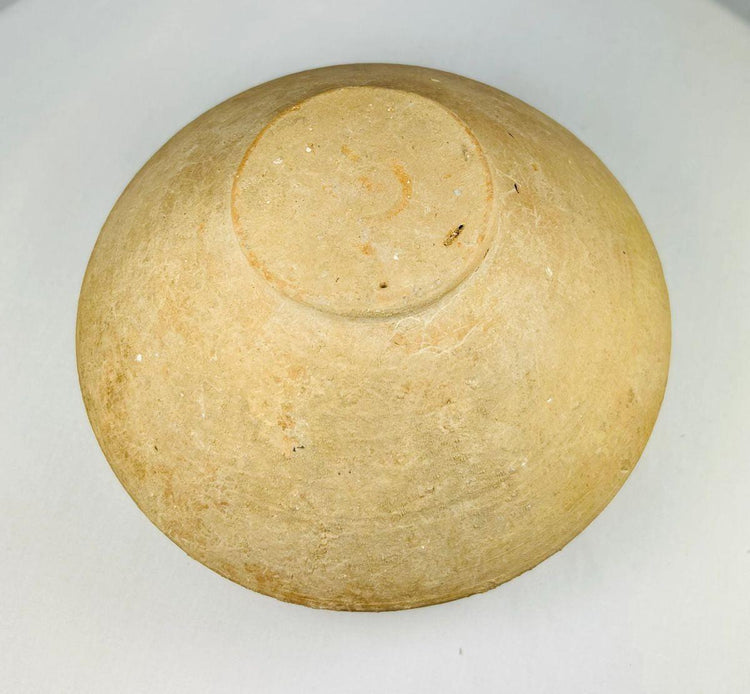Bronze Age | Terracotta Bowl | Middle Eastern or Asia | Circa 2000-1500 BCE
Description
More
Less
Historical Context & Origin
Region: Middle East or Central Asia
Material: Terracotta (coarse hand-thrown clay)
Period: Bronze Age to Early Iron Age, circa 2000–1500 BCE
Description
This hand-crafted terracotta bowl reflects the daily life and practical artistry of ancient civilizations. Shaped with a wide, shallow form and flared rim, it was likely used in food preparation, storage, or ritual contexts. Its sandy beige to reddish-brown patina, along with visible wheel marks and irregularities, highlight its handmade character and millennia of natural aging. The raised base with a small foot provided stability and durability, ensuring its utility in both domestic and ceremonial settings.
Features
- Wide, shallow form with flared rim
- Hand-thrown construction with visible wheel marks
- Raised base with small foot for stability
- Natural sandy beige to reddish-brown surface patina
- Mineral deposits and rim wear consistent with antiquity
Cultural Significance
Bowls such as this were essential to ancient households and temples, serving both functional and symbolic purposes. They reveal the balance between utility and artistry in Bronze and Iron Age societies. Their durability, simplicity, and design demonstrate how pottery served not only as a domestic tool but also as a ritual object, linking daily sustenance with spiritual practices.
Condition
The bowl shows minor rim chips, surface abrasions, and mineral accretions from long burial. Its natural patina has developed over thousands of years, enhancing its authenticity. Despite wear, the vessel remains structurally sound with no major cracks or repairs, retaining much of its original form.
Dimensions (approximate)
Diameter: 6 in
Height: 4 in
Age
Estimated 3,500–4,000 years old, dating to the Bronze Age or Early Iron Age
Description
Historical Context & Origin
Region: Middle East or Central Asia
Material: Terracotta (coarse hand-thrown clay)
Period: Bronze Age to Early Iron Age, circa 2000–1500 BCE
Description
This hand-crafted terracotta bowl reflects the daily life and practical artistry of ancient civilizations. Shaped with a wide, shallow form and flared rim, it was likely used in food preparation, storage, or ritual contexts. Its sandy beige to reddish-brown patina, along with visible wheel marks and irregularities, highlight its handmade character and millennia of natural aging. The raised base with a small foot provided stability and durability, ensuring its utility in both domestic and ceremonial settings.
Features
- Wide, shallow form with flared rim
- Hand-thrown construction with visible wheel marks
- Raised base with small foot for stability
- Natural sandy beige to reddish-brown surface patina
- Mineral deposits and rim wear consistent with antiquity
Cultural Significance
Bowls such as this were essential to ancient households and temples, serving both functional and symbolic purposes. They reveal the balance between utility and artistry in Bronze and Iron Age societies. Their durability, simplicity, and design demonstrate how pottery served not only as a domestic tool but also as a ritual object, linking daily sustenance with spiritual practices.
Condition
The bowl shows minor rim chips, surface abrasions, and mineral accretions from long burial. Its natural patina has developed over thousands of years, enhancing its authenticity. Despite wear, the vessel remains structurally sound with no major cracks or repairs, retaining much of its original form.
Dimensions (approximate)
Diameter: 6 in
Height: 4 in
Age
Estimated 3,500–4,000 years old, dating to the Bronze Age or Early Iron Age
You May Also Like























